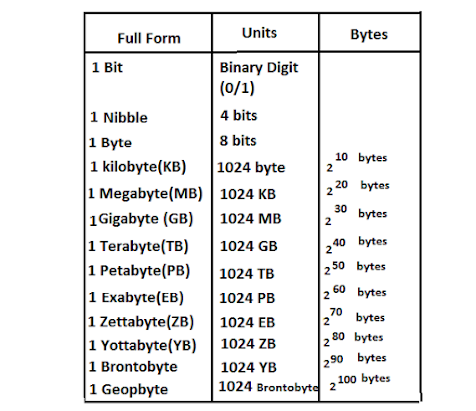Primary Memory
Primary Memory is the main memory of the computer system. It is also called internal memory. Without a primary memory computer system does not work. It is directly accessed by the CPU(Central Processing Unit). The primary memory is volatile in nature which means data does not exist if it is not saved when a power failure occurs.
Characteristics of Primary Memory
1) It is known as the main memory or internal memory.2) It directly communicates with the CPU of the computer.
3) It is faster as compared to secondary memory.
4) It is very costly as compared to secondary memory.
5) A computer cannot run without the primary memory
6) It is made by semiconductor devices so its called semiconductor memories
7) It is volatile in nature i.e.contents are lost when power is switched off
Types of Primary Memory
Primary Memory is Classify in the following way:
2) ROM(Read-only Memory)
3) Cache
RAM(Random Access Memory)
RAM is the main memory. RAM is the hardware that is used to store the data, operating system, and application programs that are currently use, so they can be quickly accessed by the processor. It is volatile memory i.e. contents are lost when power is switched off. RAM is the fastest memory which means that the computer is not kept waiting for data to process. It is more expensive than secondary memory.
Function of RAM
The main function of RAM is to provide fast temporary storage for data and programs, which includes both applications and the operating system along with hardware drivers.
When you start a program on your system, the CPU fetches the program from the hard drive. Once your system fetches files, the system requires a workspace where this data temporarily store and execute. Here RAM works as a digital countertop to perform this task.
Types of RAM
1) SRAM (Static RAM)
2)DRAM (Dynamic RAM)
ROM(Read Only Memory)
ROM stands for Read-Only Memory. It is a memory device that is used to stored information permanently. It is called read-only memory as we can only read and store the programs on it but cannot write on it. It is non-volatile in nature as it holds the information even when the power is turned off. ROM stores programs that are required to start a computer, this process is known as bootstrapping. Once data is written on a ROM chip, it cannot be removed.ROM chips are not only used in the computer but also in other electronic items like washing machines, calculators, and microwave ovens.
Types of ROM
1) MROM(Mask ROM)
2) PROM(Programmable ROM)
3) EPROM(Erasable and Programmable ROM)
4) EEPROM(Electrically Erasable and Programmable ROM)
5) UV EPROM(Ultra Violet Erasable and programmable ROM)
Cache Memory
Types of Cache memory
1) Level 1 (L1) cache or Primary Cache
2) Level 2 (L2) cache or Secondary Cache
3) Level 3 (L3) cache or Main Memory





Comments
Post a Comment